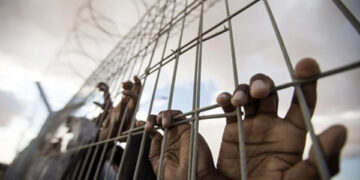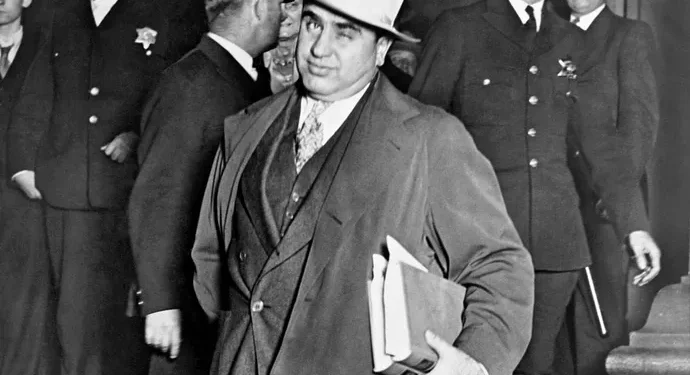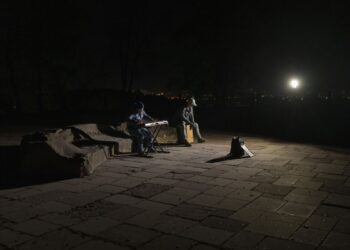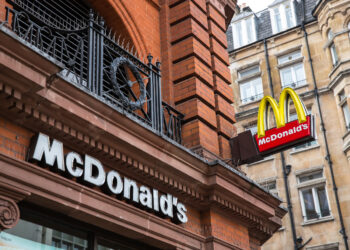Agencies-Gaza post
Al Capone, who is he?
An American gangster by the name of Alphonse Capone, also known as Scarface, was a major force in organized crime in Chicago from 1925 to 1931 and is arguably the most well-known gangster in American history. He was born in Brooklyn, New York, on January 17, 1899, and died in Palm Island, Miami Beach, Florida, on January 25, 1947.
In 1893, Capone’s parents left Naples and moved to the US. Al was born and raised in Brooklyn, New York, as the fourth of nine children. After hitting a teacher in the sixth grade, he stopped going to school at the age of 14. He held several odd jobs while participating in the South Brooklyn Rippers and Forty Thieves Juniors, two “kid gangs”—that is, groups of delinquent children known for vandalism and petty crime—that were prevalent in New York at the time. He also worked as a candy store clerk, a bowling alley pin boy, a laborer in an ammunition plant, and a cutter in a book bindery.
During this time, Capone also joined the Five Points-affiliated James Street Boys gang, which was led by Johnny Torrio, who would later serve as his lifetime mentor. At the age of 16, Capone joined the Five Points group and worked as a bartender in Yale’s brothel saloon, the Harvard Inn, for ambitious mobster Francesco Ioele (Torrio’s accomplice, better known as Frankie Yale).
Capone was involved in multiple violent episodes before he turned 21. Youngster Frank Galluccio cut Al Capone across the left cheek with a knife or razor during a fight at the Harvard Inn; this action earned Capone the subsequent moniker “Scarface.” Capone had insulted Galluccio’s sister. Later, Capone killed the victor of a local craps game while robbing him of his money. Capone was released after police interrogated him even though no one had seen the murder. Another time, Capone attacked a low-ranking member of the rival White Hand gang with great brutality and left him for dead. Yale dispatched Capone, his spouse, and their small child to Chicago after White Hand gang bosses threatened retaliation.
Torrio had relocated from New York to Chicago in 1909 to assist Chicago mob boss Big Jim Colosimo in managing the massive brothel business. Colosimo was slain in 1920, soon after Capone’s entrance into the city in 1919, to pave way for Torrio’s leadership, possibly by Yale or Capone himself. New bootlegging businesses started as Prohibition got underway, bringing in enormous money. Joe Howard was killed in 1924 by Al Capone as retaliation for Howard’s prior assault on one of Capone’s friends. When the witnesses to the murder lost their composure out of terror and denied recalling what happened, William McSwiggin, an aggressive prosecutor, tried but failed to indict Capone.
To kill gang leader Dion O’Bannion in his flower store later that year, Torrio and Capone recruited Yale and other friends. Early in 1925, O’Bannion’s colleagues Hymie Weiss and George (“Bugs”) Moran made a failed effort to murder Torrio.
After serving time in prison, Torrio moved to Italy, and Capone took over as Chicago’s crime lord. He ran gambling, prostitution, and bootlegging operations and expanded his sphere of influence by assassinating competitors and members of competing gangs. Following the unintentional murder of McSwiggin by Capone and several of his thugs in 1926 while attacking other competitors, the gangster went into hiding for three months.
McSwiggin was shot and killed in the street that night while out drinking with two boyhood pals who were also beer runners and other criminals. Capone avoided punishment once more. His net worth was reported to be close to $100 million in 1927. The St. Valentine’s Day Massacre, which took place on February 14, 1929, in a garage on Chicago’s North Side, where seven members of Bugs Moran’s gang were shot to death with machine guns, is the most infamous of the bloodbaths. Also in 1929, Capone was sentenced to 10 months in Philadelphia’s Holmesburg Prison for carrying a hidden pistol. The enormous image of Capone captivated a lot of Americans.
Capone was charged with 22 counts of evading federal income taxes from 1925 through 1929 on June 5, 1931. Capone and others were accused of conspiring to break the Prohibition laws from 1922 to 1931 on June 12. Capone was tried in October, found guilty on three of the 23 counts, and given an 11-year prison term along with a $50,000 fine and court costs. He was admitted to the Atlanta Penitentiary in May 1932, but in August 1934 he was moved to the brand-new Alcatraz prison. He was discharged and checked into a Baltimore hospital in November 1939, when he was suffering from the overall degeneration of paresis (a late stage of syphilis). Later, he withdrew to his Florida house, where he passed away in 1947 after suffering a heart arrest.






















